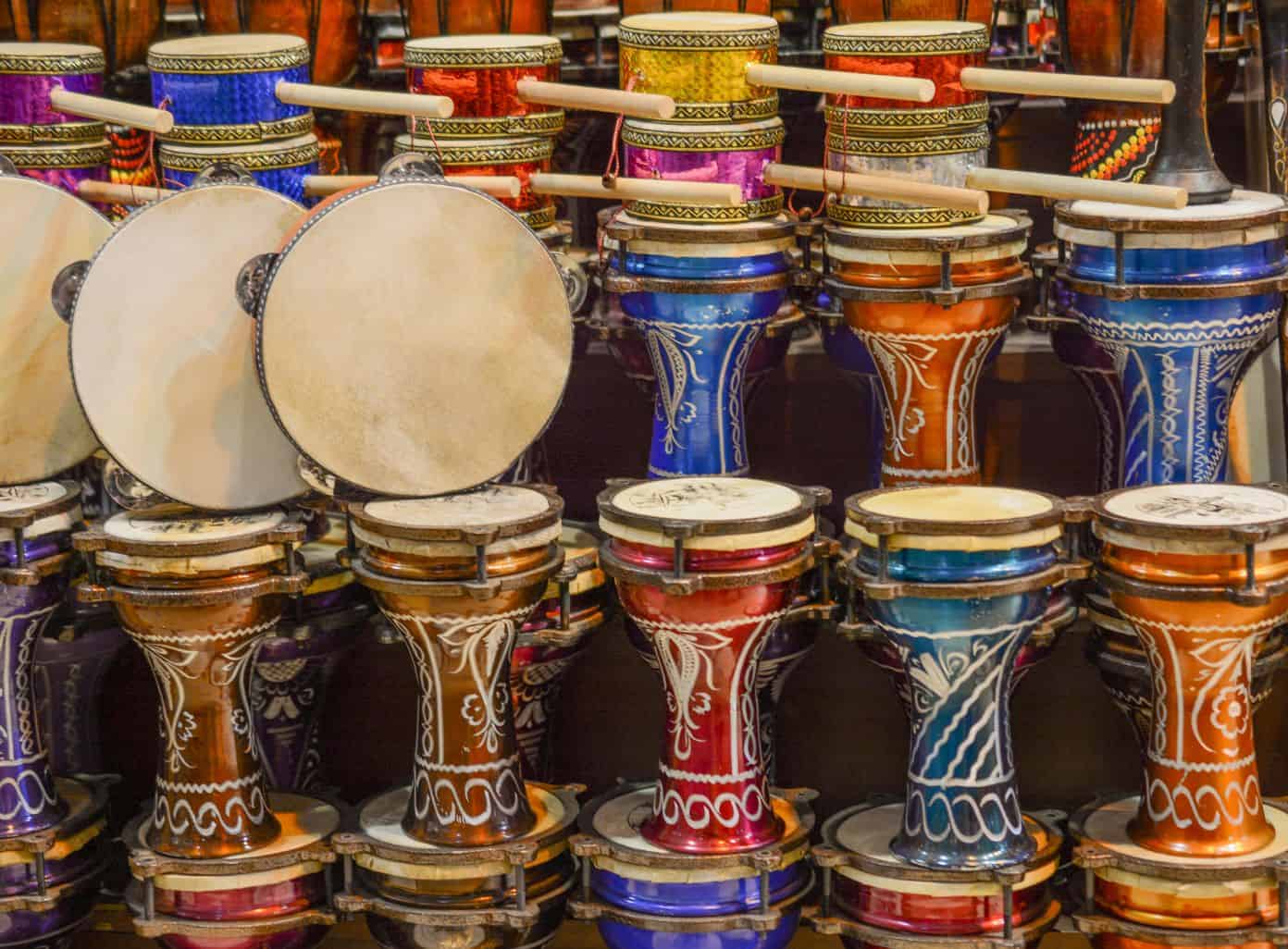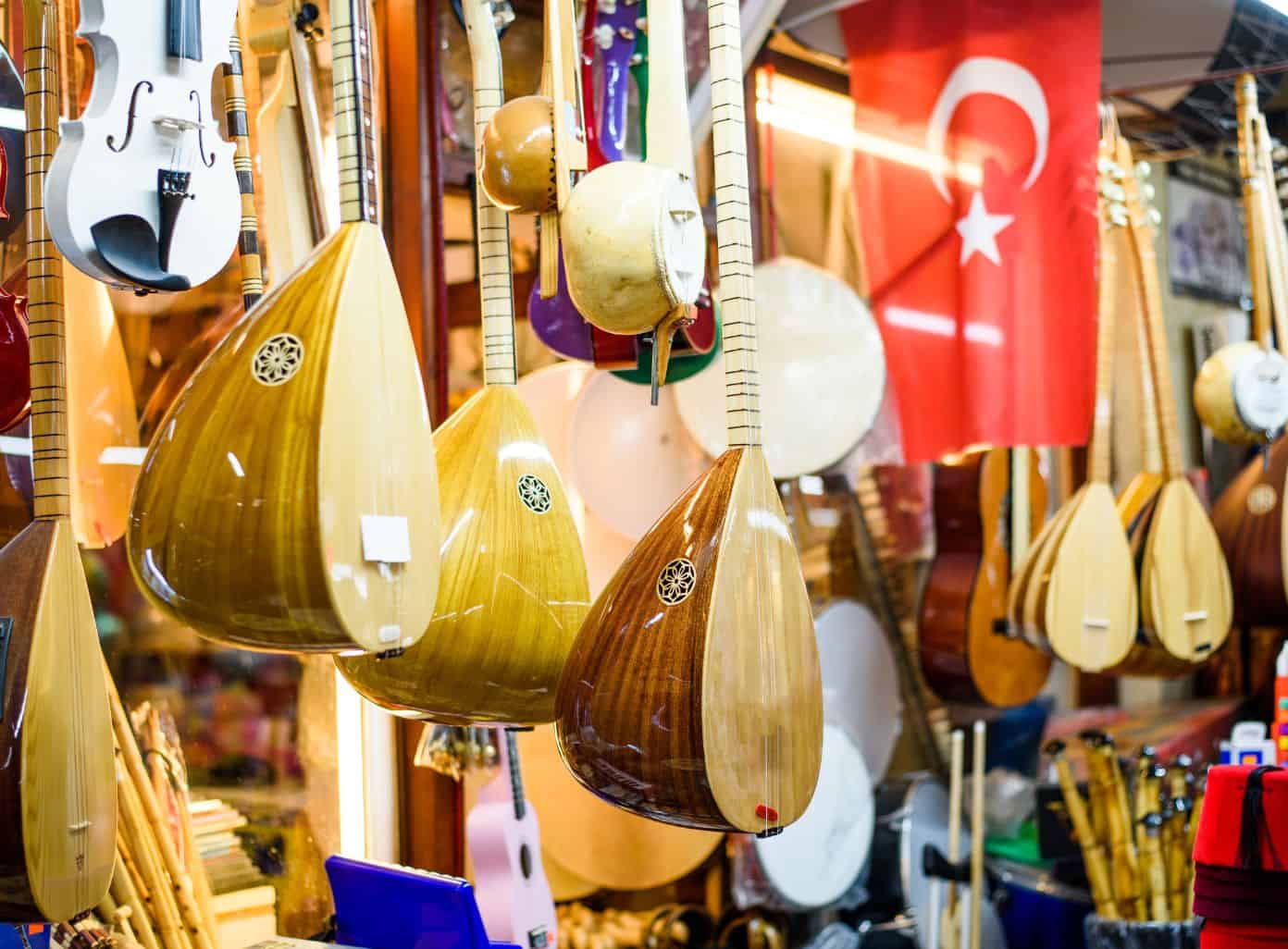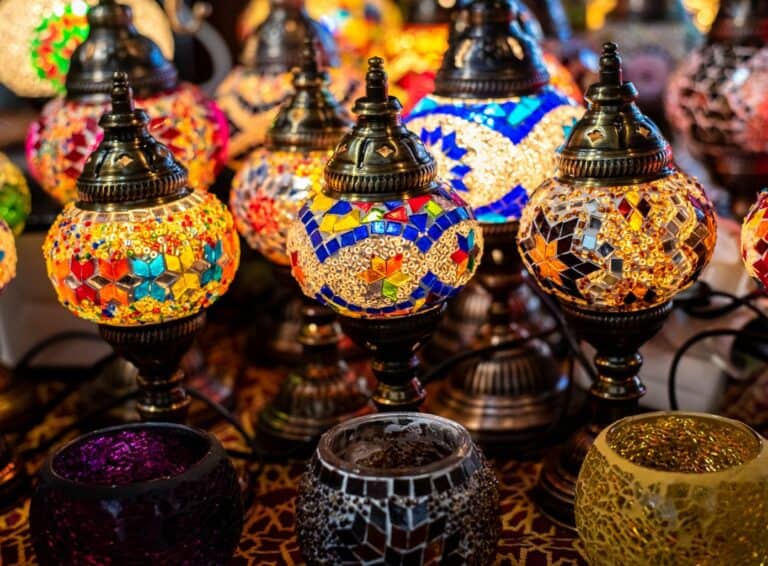Turkey: A Cultural Treasure
Turkey is renowned for its rich cultural heritage, and one of its most captivating aspects is its artistic gems. From traditional crafts to contemporary masterpieces, Turkey offers a diverse and vibrant art scene that reflects its historical and cultural significance. Let’s delve into the artistic heritage of Turkey and uncover its hidden beauty.

Introduction to Turkey’s Artistic Gems
Turkey’s artistic gems encompass a wide range of artistic expressions, from fine arts to traditional crafts. The country’s artistic heritage is deeply rooted in its diverse history, influenced by various civilizations and cultures that have thrived on its lands. Turkish art represents a fusion of traditional and modern elements, resulting in a unique and captivating artistic experience.
The Rich Artistic Heritage of Turkey
Turkey’s artistic heritage is a testament to its historical and cultural legacy. Traditional Turkish arts have flourished over centuries and continue to be cherished today. Some of the notable traditional art forms include:
Turkish Calligraphy
Turkish calligraphy, also known as “hat,” is an intricate art form that involves the skilled writing of Arabic script. It has been a prominent form of artistic expression, particularly in Islamic art. Turkish calligraphy is admired for its elegance and beauty, with master calligraphers producing stunning works that adorn mosques, manuscripts, and other artistic pieces.
Turkish Miniature Painting
Turkish miniature painting is a delicate and meticulous art form that originated during the Ottoman Empire. Miniature paintings depict scenes from daily life, historical events, and literature, often adorned with intricate details and vibrant colors. These miniatures provide a glimpse into the rich cultural heritage and storytelling traditions of Turkey.
Turkish Ceramics and Pottery
Turkish ceramics and pottery have a long-standing tradition that dates back thousands of years. The art of ceramics has been passed down through generations, with artisans producing exquisite pottery pieces adorned with intricate patterns and vibrant colors. Turkish ceramics are admired for their beauty, craftsmanship, and cultural significance.
Turkish Carpet Weaving
Turkish carpet weaving is a renowned art form that has gained international recognition for its exceptional craftsmanship. Turkish carpets are characterized by their intricate designs, vibrant colors, and fine weaving techniques. Each carpet tells a unique story, representing the cultural heritage and artistic traditions of different regions in Turkey.
Turkey’s artistic heritage is not limited to traditional art forms. The country’s contemporary art scene is vibrant and dynamic, with modern Turkish painters, sculptors, and installation artists pushing boundaries and exploring new artistic expressions. Visitors to Turkey can immerse themselves in this thriving art scene by visiting art galleries, exhibitions, and street art installations.
From the bustling streets of Istanbul to the ancient ruins of Ephesus, Turkey is home to numerous artistic centers where the country’s artistic gems can be explored. Each region offers its own unique artistic experience, showcasing the diverse cultural heritage and artistic traditions of Turkey. For more information on specific artistic centers, check out our articles on Turkey’s architectural wonders and Turkey’s natural landscapes.
Uncovering the hidden beauty of Turkey’s artistic gems provides visitors with a deeper understanding and appreciation of the country’s cultural heritage. Whether it’s exploring lesser-known artistic gems or indulging in unique artistic experiences, Turkey offers a treasure trove of artistic wonders waiting to be discovered.

Traditional Turkish Arts
Turkey is renowned for its rich artistic heritage, with a wide range of traditional arts that have been passed down through generations. These art forms not only showcase the creativity and craftsmanship of the Turkish people but also provide a glimpse into the country’s cultural identity. Let’s explore some of the traditional Turkish arts that continue to captivate art enthusiasts worldwide.
Turkish Calligraphy
Turkish calligraphy is a unique and revered art form that combines the elegance of writing with intricate designs. Known as “hat” in Turkish, calligraphy holds a significant place in Turkish culture and is often seen in mosques, manuscripts, and inscriptions. The art of calligraphy involves using a reed pen to write Arabic or Ottoman Turkish script in a visually stunning manner. It requires precision and mastery of various calligraphic styles, such as thuluth, naskh, and diwani.
Turkish Miniature Painting
Turkish miniature painting is a delicate art form that dates back to the 16th century. It involves intricate brushwork and meticulous attention to detail to create miniature illustrations on paper or manuscripts. These paintings often depict historical events, landscapes, and scenes from daily life. The use of vibrant colors and intricate patterns adds depth and richness to the miniatures, making them visually captivating.
Turkish Ceramics and Pottery
Turkish ceramics and pottery have a long-standing tradition that spans centuries. Renowned for their intricate designs and vibrant colors, Turkish ceramics encompass a wide range of pottery styles, including İznik, Çanakkale, and Kütahya. These ceramics feature elaborate floral motifs, geometric patterns, and traditional Turkish motifs. The art of pottery-making is deeply embedded in Turkish culture, and today, you can find beautifully crafted ceramics that serve both decorative and functional purposes.
Turkish Carpet Weaving
Turkish carpet weaving is an art form that has flourished for centuries and is synonymous with Turkish culture. Turkish carpets are known for their exquisite craftsmanship, intricate designs, and rich colors. Each carpet is meticulously hand-woven using traditional techniques passed down through generations. The patterns and motifs found in Turkish carpets often hold symbolic meanings and reflect the diverse cultural heritage of the region. From the famous Anatolian carpets to the intricately woven Kilims, Turkish carpets are a testament to the skill and creativity of the Turkish people.
These traditional Turkish arts not only celebrate the country’s artistic heritage but also provide a window into its cultural tapestry. From the graceful strokes of calligraphy to the intricate designs of ceramics and the timeless beauty of Turkish carpets, these art forms continue to inspire and captivate people around the world. Exploring the traditional arts of Turkey is an enriching experience that offers a deeper understanding of the country’s cultural identity.
For more information on Turkey’s artistic treasures, including contemporary art and hidden gems, continue reading our articles on Turkey and Turkish arts.
Contemporary Turkish Art Scene
Turkey’s vibrant art scene is not limited to traditional forms. The country is also home to a thriving contemporary art scene that showcases the talent and creativity of modern Turkish artists. In this section, we will explore three aspects of the contemporary Turkish art scene: modern Turkish painters, sculpture and installation art, and street art and graffiti.
Modern Turkish Painters
Modern Turkish painters have made significant contributions to the art world, expressing their unique perspectives through various styles and techniques. These artists draw inspiration from both traditional Turkish art forms and global artistic movements. Their works range from abstract and experimental to figurative and representational.
Some notable modern Turkish painters include:
| Artist Name | Style |
|---|---|
| Ebru Dosekci | Abstract Expressionism |
| Bedri Baykam | Pop Art |
| Fahrelnissa Zeid | Abstract Expressionism |
| Burhan Doğançay | Urban Art |
Visiting art galleries and museums in major cities like Istanbul and Ankara provides an opportunity to witness the diverse range of styles and themes explored by modern Turkish painters. For an immersive experience into Turkey’s art scene, consider attending art exhibitions and events that showcase the works of these talented artists.
Sculpture and Installation Art
Sculpture and installation art have gained prominence in contemporary Turkish art, offering a three-dimensional and interactive experience for viewers. Turkish sculptors push boundaries and experiment with various materials, creating thought-provoking and visually striking works of art.
Some renowned Turkish sculptors and installation artists include:
| Artist Name | Style |
|---|---|
| Mehmet Aksoy | Figurative Sculpture |
| Ayşe Erkmen | Site-specific Installations |
| Ali İbrahim Öcal | Abstract Sculpture |
| Serkan Özkaya | Conceptual Art |
From monumental sculptures displayed in public spaces to immersive installations exhibited in galleries, contemporary Turkish sculptors and installation artists captivate audiences with their innovative and thought-provoking creations. Exploring outdoor sculpture parks and visiting contemporary art museums allows visitors to engage with these captivating art forms.
Street Art and Graffiti
Street art and graffiti have emerged as powerful forms of self-expression in Turkey’s urban landscape. Turkish street artists use walls, buildings, and public spaces as their canvas, infusing the streets with color, creativity, and social commentary. This dynamic art form reflects the cultural, political, and social issues that shape Turkish society.
Some prominent Turkish street artists and graffiti writers include:
| Artist Name | Style |
|---|---|
| Mehmet Civelek | Stencil Art |
| Canavar | Calligraffiti |
| Bozca | Mural Art |
| Nespoon | Lace Street Art |
Exploring neighborhoods like Istanbul’s Kadıköy, Ankara’s Hamamönü, and Izmir’s Karşıyaka reveals a vibrant street art scene, with captivating murals, stencils, and graffiti adorning the city walls. These art-filled streets provide a unique and unfiltered glimpse into the contemporary cultural landscape of Turkey.
The contemporary Turkish art scene encompasses a diverse range of artistic expressions, from modern painting to sculpture, installation art, and street art. By immersing yourself in this thriving art culture, you can appreciate the creativity, talent, and unique perspectives of Turkish artists today.
Exploring Turkey’s Artistic Centers
Turkey is home to several vibrant artistic centers that showcase the country’s rich cultural heritage and artistic traditions. From the bustling cultural hub of Istanbul to the ancient ruins of Ephesus, each city offers a unique artistic experience. Let’s explore some of Turkey’s artistic centers:
Istanbul: The Cultural Hub
As Turkey’s largest city and a melting pot of different cultures, Istanbul is a treasure trove of artistic gems. The city is home to numerous art galleries, museums, and cultural institutions, where you can immerse yourself in a wide range of artistic expressions. From contemporary art exhibitions to traditional Turkish arts and crafts, Istanbul has something for every art enthusiast. Don’t miss the opportunity to visit the iconic Hagia Sophia and the Topkapi Palace, which house incredible collections of art and artifacts from different eras. For more information on Istanbul’s artistic attractions, check out our article on Istanbul.
Cappadocia: Cave Paintings and Pottery
Cappadocia, known for its unique rock formations and cave dwellings, is also an artistic haven. The region is renowned for its centuries-old tradition of pottery and ceramics. Take a stroll through the charming towns of Avanos and Ürgüp, where you can witness skilled artisans crafting intricate designs on clay. Additionally, Cappadocia is home to ancient cave paintings, dating back thousands of years. These captivating artworks provide a glimpse into the region’s fascinating history and artistic legacy.
Ephesus: Ancient Greek and Roman Art
Located near the Aegean coast, the ancient city of Ephesus is a must-visit for art and history enthusiasts. As one of the most well-preserved ancient cities in the world, Ephesus offers a remarkable insight into the art and architecture of the ancient Greeks and Romans. Explore the grand Theater of Ephesus, adorned with intricate carvings, or marvel at the Library of Celsus, an architectural masterpiece. The city’s archaeological sites are a testament to the artistic achievements of civilizations that once thrived in the region.
Konya: Whirling Dervishes and Sufi Art
Konya, the spiritual center of Turkey, is renowned for its association with the mystical Sufi tradition. The city is famous for the whirling dervishes, who perform the mesmerizing Sufi dance known as the Sema. This unique form of artistic expression combines music, poetry, and dance to create a captivating spiritual experience. Konya is also home to the Mevlana Museum, dedicated to the renowned Sufi poet and philosopher, Rumi. The museum showcases a collection of Sufi art, manuscripts, and artifacts, offering a glimpse into the mystical world of Sufism.
Exploring these artistic centers in Turkey allows you to immerse yourself in the country’s captivating artistic heritage. From the bustling streets of Istanbul to the ancient ruins of Ephesus and the spiritual traditions of Konya, each city offers a distinct artistic experience that is sure to leave a lasting impression. Discover the hidden beauty of Turkey’s art and culture as you explore these remarkable destinations.
Uncovering the Hidden Beauty
Turkey is not only home to well-known artistic gems but also boasts a wealth of lesser-known artistic treasures waiting to be discovered. These hidden gems offer a unique and enriching experience for visitors who are passionate about art and culture. Let’s explore some of these lesser-known artistic gems in Turkey.
Lesser-Known Artistic Gems in Turkey
- Göreme Open Air Museum: Located in the captivating region of Cappadocia, the Göreme Open Air Museum is a UNESCO World Heritage site known for its rock-cut churches adorned with stunning frescoes. This hidden gem offers visitors a glimpse into the rich history of Byzantine art and the unique rock-carved architecture of the region. Exploring the underground cities and cave dwellings in Cappadocia is an artistic and historical journey in itself.
- Pergamon Museum: Situated in the ancient city of Pergamon (now Bergama), the Pergamon Museum is a lesser-known gem that showcases remarkable ancient Greek and Roman art. Visitors can marvel at the impressive sculptures and architectural remnants, including the famous Pergamon Altar, which is considered one of the most significant Hellenistic structures in the world.
- Anatolian Civilizations Museum: Nestled in the heart of Ankara, the Anatolian Civilizations Museum is a hidden treasure that houses a vast collection of artifacts spanning thousands of years of Anatolian history. From intricately carved Hittite reliefs to mesmerizing Byzantine mosaics, this museum offers a comprehensive look at the diverse artistic heritage of Turkey.
Unique Artistic Experiences for Visitors
In addition to these lesser-known artistic gems, Turkey offers numerous unique artistic experiences for visitors to immerse themselves in the country’s vibrant art scene. Here are a few noteworthy options:
- Artisan Workshops: Throughout Turkey, you can find artisans practicing traditional crafts such as carpet weaving, ceramic making, and calligraphy. Visiting these workshops provides an opportunity to witness the intricate processes involved in creating these exquisite pieces of art. You may even have the chance to try your hand at these crafts under the guidance of skilled artisans.
- Local Art Festivals: Various regions in Turkey host local art festivals that celebrate the cultural diversity and artistic talents of the area. These festivals feature live performances, art exhibitions, and craft markets, providing a platform for local artists to showcase their work. Attending one of these festivals is a fantastic way to experience the vibrant art scene and immerse yourself in the local culture.
- Street Art Tours: Cities like Istanbul and Ankara have thriving street art scenes, with vibrant murals and graffiti adorning the walls of buildings. Taking a street art tour allows you to explore these urban art galleries and learn about the stories and inspirations behind the artworks. These tours provide a unique perspective on the contemporary art scene in Turkey.
By uncovering these hidden artistic gems and embracing the unique experiences they offer, visitors to Turkey can truly appreciate the depth and diversity of the country’s artistic heritage. Whether you explore lesser-known museums or engage with local artists and artisans, the artistic beauty of Turkey is sure to leave a lasting impression.


